Rhubarb is an easy plant to grow and its harvest is often abundant.
Key Rhubarb facts
Name – Rheum rhaponticum
Family – Polygonaceae
Type – perennial
Height – 1 ⅓ to 3 feet (0.5 to 1 meter)
Exposure – full sun, part sun
Soil – rather rich and acidic
Foliage – deciduous – Harvest – spring/summer
From planting or preparing seedlings all the way to harvesting petioles, regular care should help you boost growth. Growing, care and recipes… here is all our advice.
- Health: health benefits of rhubarb
Planting rhubarb
Rhubarb is best planted in fall from rhizomes, but can also be planted in spring.
Since it takes up a lot of volume, keep a space that is separate from the vegetable patch, because if you don’t, it will quickly colonize the entire plot!
Rhubarb needs rich soil, and regularly adding organic fertilizer is a requirement for it to “prosper”.
Two or three rhizomes planted 3 feet (1 meter) apart are more than enough to cover an entire family’s needs.
- Although you will certainly find the perfect rhubarb for you in your local horticulture store, it is also a plant that can be shared from friends and family, and even handed down from father to son!
- Rhizomes are easy to divide once the plant starts growing well.
- A chop of the spade will make you the proud owner of what can become a complete bed of rhubarb that will be at your side for your entire life.
- Even if you must move around in life, don’t leave your rhubarb without a caretaker!
- Bring a piece of it to your new home: dig a cluster or root out, and life will go on!
Sowing rhubarb
If you wish to sow rhubarb, sow in spring or summer, preferably in nursery pots, and place them in the ground from September to March.
Pruning and caring for
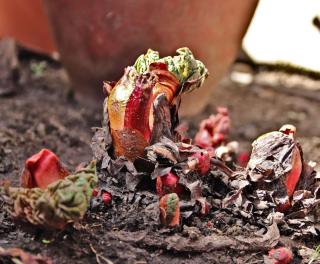
You can spur its growth, especially the first year, by offering each stem bunch 3.5 oz (100 g) of type 7-11-17 mineral or 5-7-7 organic fertilizer granules.
Tear the last petioles off in the first days of winter.
The rhizomes will enter dormancy, but they will surprise you anew in the first days of spring. Mulch can help retain soil moisture in summer.
Watering rhubarb
Rhubarb is a plant that perspires a lot during summer because of its huge leaves. It requires dedicated watering.
- Water in case of prolonged dry spells or heat waves.
- It is best to water in the evening, and avoid wetting the leaves.
Harvesting rhubarb
Harvesting generally occurs twice a year, from April to September/October. Tender spring shoots are a favorite, they’re the most tender and least bitter.
- Choose firm and thick petioles, around 1¼ to 1½ inches (3 to 4 cm) thick.
- Pull them out at their base, breaking them off rather than cutting them.
- Clean the petioles and store them in a cool spot to keep them from drying out.
Keep the wide leaves to prepare rhubarb tea to fight aphids and leaf-mining flies.
Forcing rhubarb
Every other year, you can “force” your rhubarb plant.
end of January, clear any protective mulch from atop your rhubarb plant.
- Flip a large pot upside-down over the clump.
- Block out any light from reaching inside. For this, plug all the holes.
- Insulate around the pot to let soil warm up. Use fern fronds, straw or dead leaves for instance.
- For two months, don’t open the pot or let light in.
- End of March, normally your rhubarb stalks will start lifting the pot up. You can harvest the stalks!
Forcing has two advantages: it triggers the plant to start sprouting earlier, and stalks are much sweeter.
However, you shouldn’t force the same clump two years in a row. Best practice is to grow 2 or 4 plants, so you can alternate which ones you force.
All there is to know about rhubarb
Rhubarb is native to Asia, and was only introduced in the West around two hundred years ago.
Today, it is used as a fruit when preparing jam or delicious rhubarb pies but in the botanical classification it is a vegetable.
-
It can be grown anywhere in Europe, but is more common in cool temperate climates.
- This magnificent plant can reach over 3 feet (1 meter).
- Not only can this plant provide a bright green bed that compliments the view, it can also surprise you and enhance your desserts and favorite jams.
Primer on rhubarb health benefits
Rhubarb is famous for its laxative properties.
Mineral-rich, with high phosphorus, magnesium, potassium and calcium content, rhubarb is a very good food supplement, especially to enhance digestion.
Smart tip for the true rhubarb expert
Many sweet-tooth recipes will lead you to appreciate this plant from your vegetable patch, and your preserves will definitely rejoice your family! One last thing to know: rhubarb leaves are excellent for your compost.
SteveCymro/shutterstock
Harvested rhubarb by Alex ★ under Pixabay license
Young rhubarb plant by Karolina Grabowska / Kaboompics ☆ under Pixabay license
Growing back in Spring by Melanie ☆ under Pixabay license
Rhubarb forcing pot by Alyx H. ★ under Pixabay license


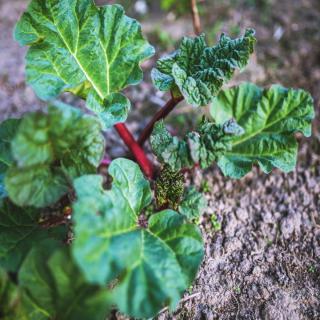
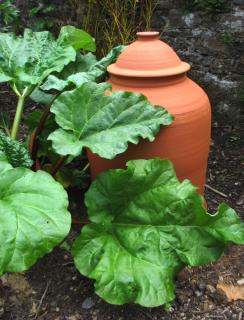
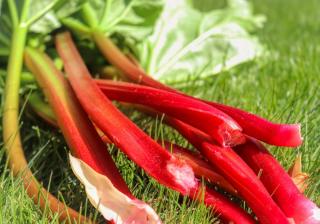
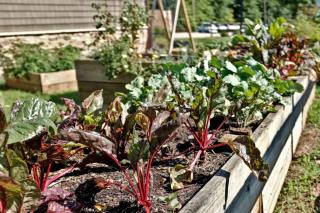
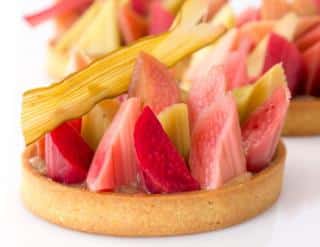
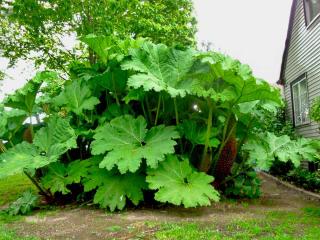
I have a question
Ask my questionI'd like to comment
Post a commentNo comments yet – be the first to share your thoughts!